Recently I changed from Robin Hood Bread flour to Anita’s Organic All Purpose flour. I did a flour stress test and found that Anita’s is more extensible than Robin Hood, however, I’ve discovered in my past couple of bakes that it cannot absorb as much water. In this bake I’ve reduced the hydration of this formula from 80 to 76%. I did a bake of this formula that came out flat. At first I thought it was over proofed, since I’ve been pushing proofing, but when I sliced it open it showed no signs of overproofing so my feeling is that it was over hydrated. If you’re interested in the formula, I’ve posted it before the only changes made this time were to replace all the white flours with the all purpose and to lower the hydration to 76%. I allowed this to ferment to 60% rise in the aliquot jar as has been my usual lately. After shaping I allowed a further warm 82ºF final proof until the aliquot jar rose to 95%. Based on the expansion and bloom of this loaf, I’m guessing I could have gone further, but the crumb will tell for sure.
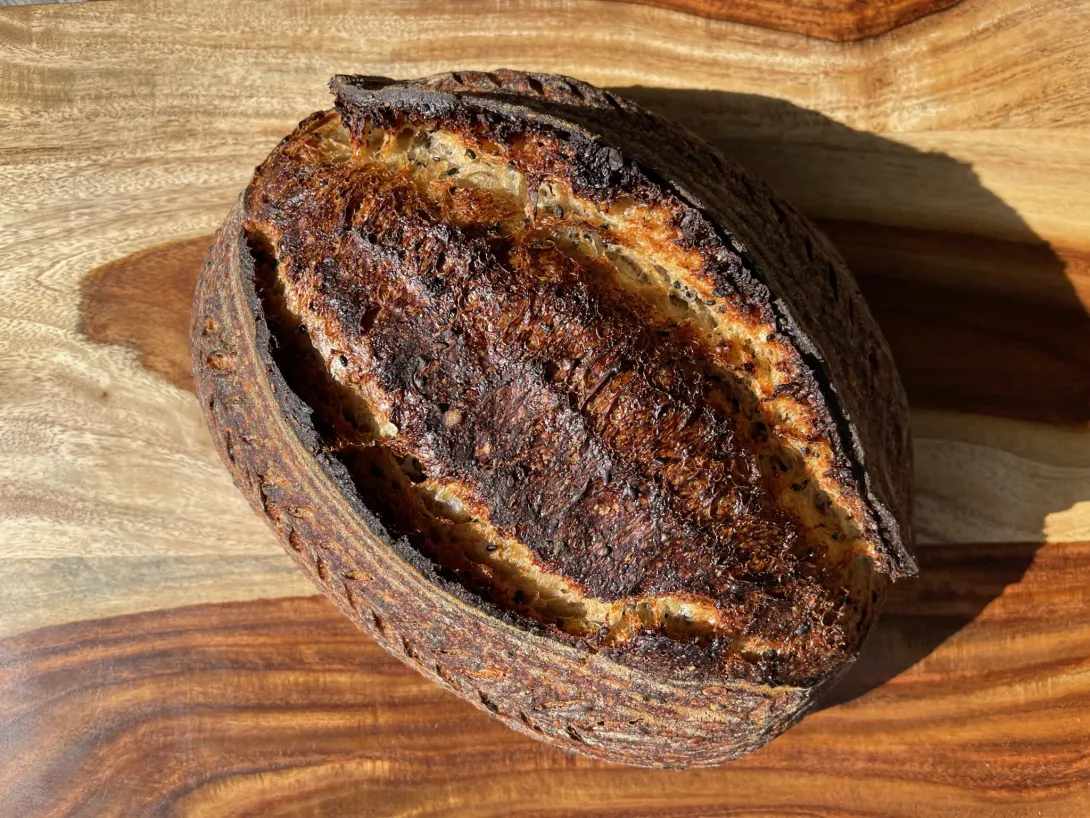
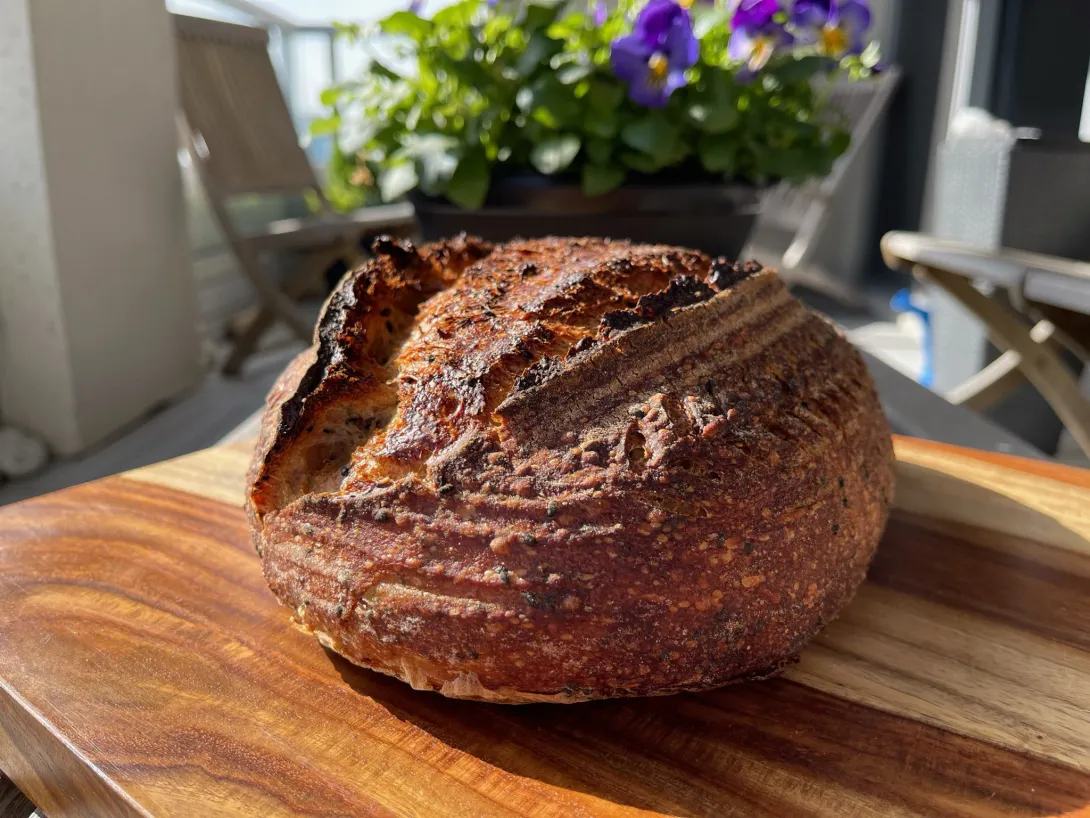
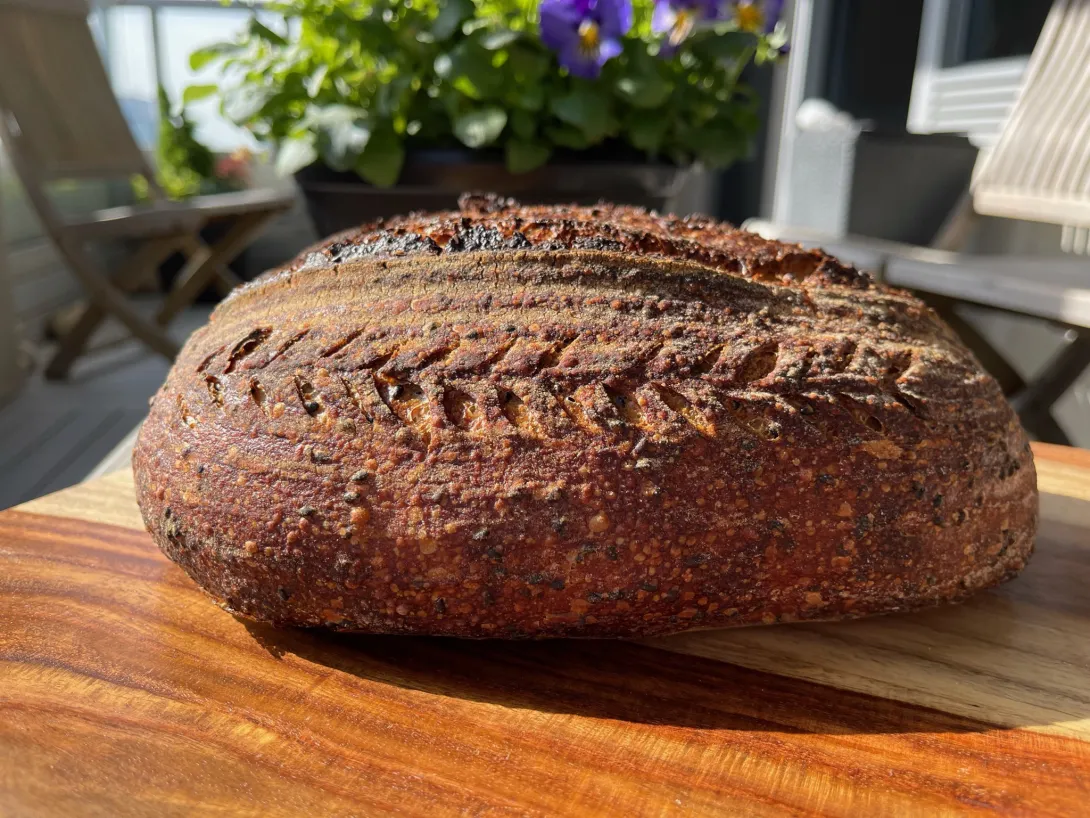
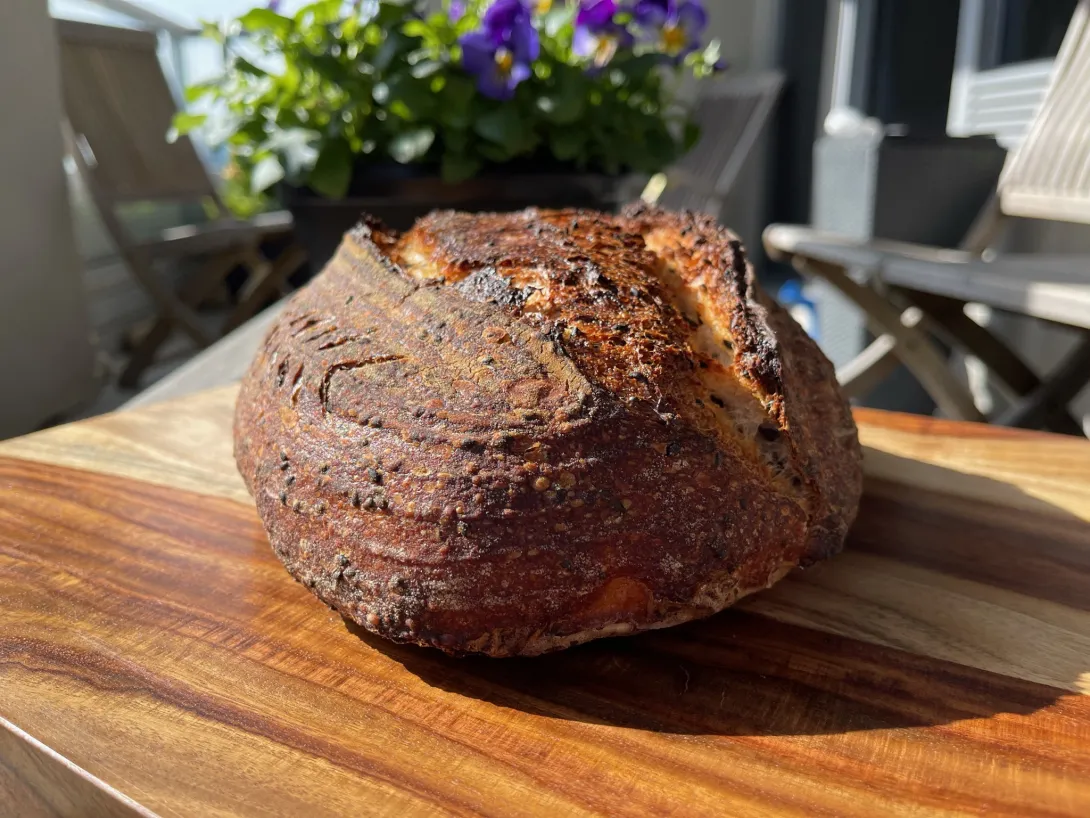
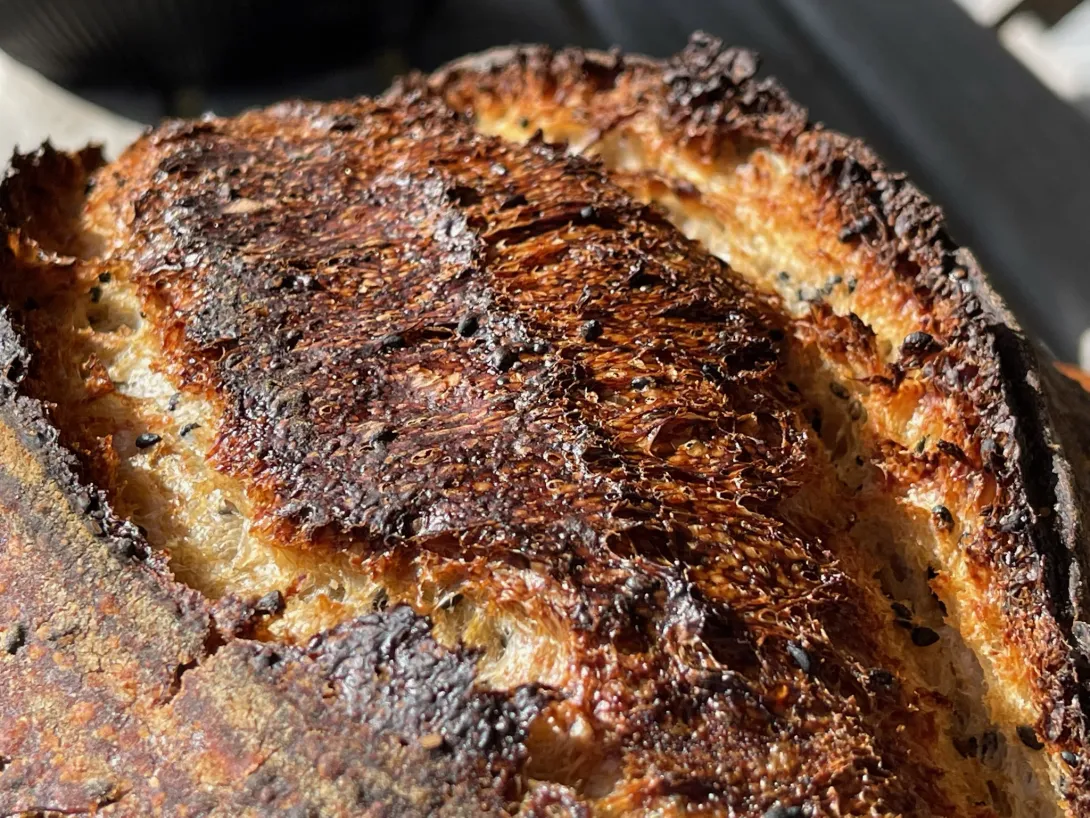
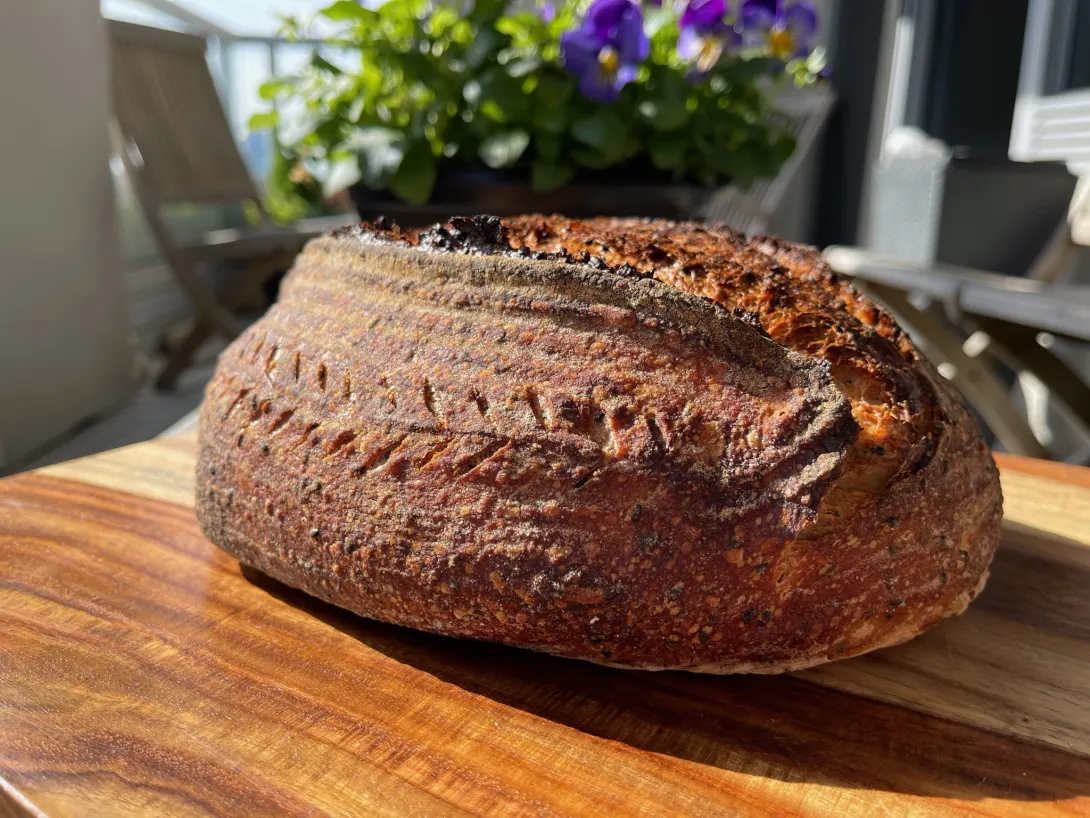
- Benito's Blog
- Log in or register to post comments
The crumb isn’t bad but it could stand to have more fermentation. I’ll allow more final proofing before cold retard next time, I’ll go to 100% or more, I don’t see signs of overproofing so upwards and onwards. The hydration feels right this time so I’ll leave it at 76% and just push fermentation to see if I can get that elusive lacy crumb. This one is also quite tasty with the black sesame seeds and has little tang to it.
Do black sesame seeds differ from white ones tastewise? I haven't used either kind much. Would they be interchangeable?
As long as you use toasted sesame seeds you’ll get a lot of sesame flavour, but think of the toasted black sesame seeds as turbocharged sesame flavor compared with the toasted white ones.
Benny
Another nice one Benny. Did this go directly in the oven or in the fridge after the 95% mark?
Thank you David, after the 95% aliquot jar rise it went into the fridge overnight and was baked in the morning.
Benny, Looks like you’re dialing it in. It’s amazing how much a change in flour can have on a recipe!
Yes it is amazing how much a change in flour, even a simple bread to all purpose flour can have. I do prefer this flour for the fact that it is organic like the whole grain flours I use, but it may take a while for me to figure it out.
Lovely as always! Nice to see your breads migrating to the patio as the weather warms on your side.
I was wondering if this flour is a malted flour, judging by the colouration of the top?
Also, I'm most surprised that a 95% aliquot is still not proofed enough! How many hours did it take, out of curiosity? My thinking lately is that it isn't just the type of flour, but also how much of the gluten you can get to 'express' [1] from the flour that is also a variable in the aliquot story.
-Jon
[1] yes, we should talk about strength, not 'expression'...but I like my horrible choice of words here somehow
So the flours I am using no longer have any added amylase. Since this one I didn't do the overnight saltolyse, I added diastatic malt 0.5%.
I do try to fully develop the gluten at the beginning of bulk with slap and folds, I think I did 600 for this loaf. I'm trying to have the dough keep as much of the developed gases as possible. I do think that this needed to ferment even more so next time I'd go past 100% rise in the aliquot jar.